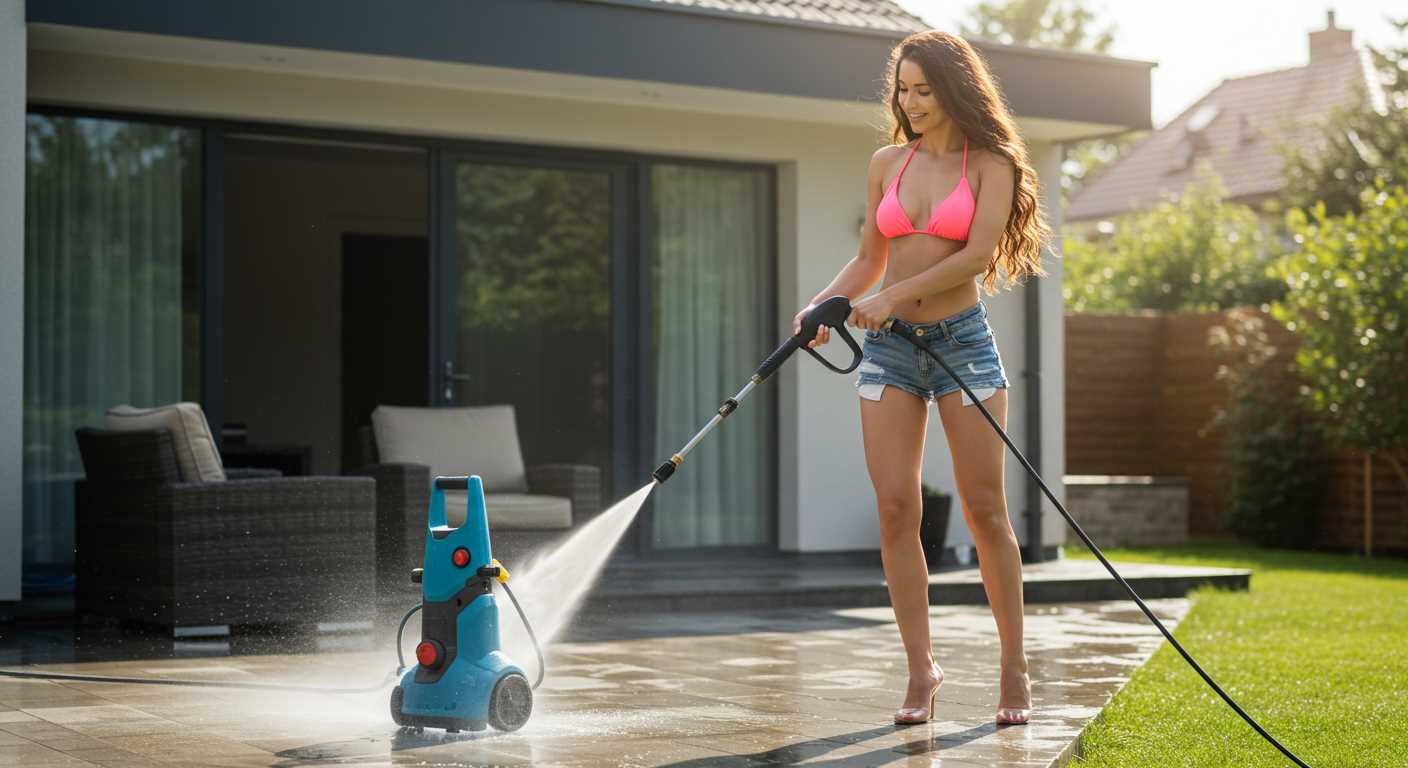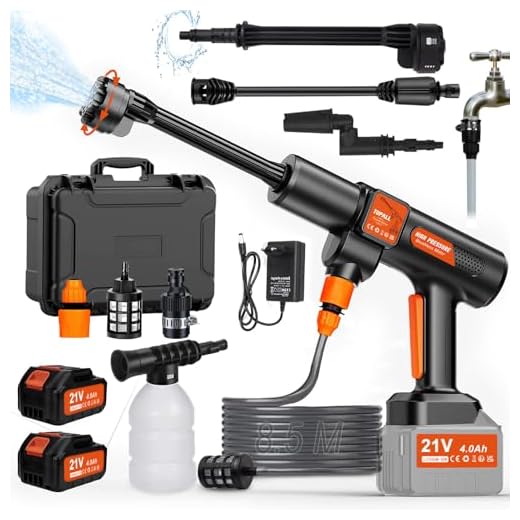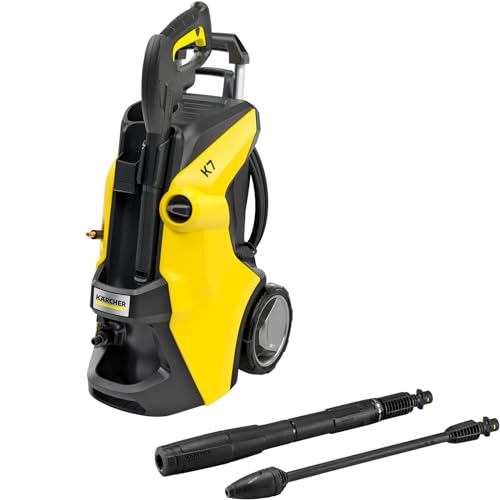



To achieve optimal cleaning results, prioritise flow rate over pressure. A higher flow rate significantly enhances the dirt removal process, especially for larger surfaces or stubborn stains.
For instance, a machine delivering 8 litres per minute, even at a lower pressure, can often outperform a less efficient model with higher pressure but lower flow rate. This is particularly true in applications such as cleaning driveways or patios, where water coverage is crucial.
When selecting equipment, I suggest looking for a balance that aligns with your cleaning tasks. Generally, a flow rate of 6 to 9 litres per minute, coupled with sufficient pressure, suffices for most home applications while ensuring comprehensive cleaning without causing surface damage.
The combination of pressure and flow definitely matters, but for effective grime removal and rinsing, always lean towards that higher flow rate. This approach will transform your cleaning tasks, making them quicker and far less laborious.
PSI or GPM: Which Holds Greater Significance?
For optimal cleaning results, I recommend focusing on both pressure and flow rate, depending on the task. If the goal is to remove tough grime or stains from hard surfaces like concrete, prioritising pressure (PSI) is vital. Higher PSI effectively dislodges stubborn dirt, making it essential for intensive cleaning jobs.
Conversely, for projects requiring efficient rinsing or washing larger areas–like cars or patios–flow rate (GPM) becomes paramount. An increased GPM ensures quicker coverage and rinsing, reducing overall time spent on such tasks. A good rule of thumb is to aim for a machine with at least 1.5 GPM for general outdoor cleaning tasks.
In practical terms, striking a balance matters. A unit with 2000 PSI and 1.5 GPM will offer formidable cleaning power, while a model boasting 3000 PSI but only 1.0 GPM might struggle with efficiency. Therefore, consider your specific cleaning needs before making a selection.
Do not overlook the nozzle type either. Different nozzles can significantly affect performance by altering the spray pattern and intensity, giving you further control over the cleaning process. Choose a nozzle that complements the flow rate and pressure for the best results on a variety of surfaces.
Understanding PSI: Pressure and Its Role in Cleaning
The measurement of pressure, typically defined in pounds per square inch, plays a critical role in determining how effectively a cleaning task can be carried out. Higher numbers indicate the ability to dislodge dirt and grime more efficiently.
Application-Specific Recommendations

For heavier jobs like removing paint or tackling deeply embedded mold, equipment with a pressure rating of 3000 PSI or higher can significantly reduce cleaning time. Conversely, for delicate surfaces such as cars or garden furniture, opting for settings around 1300 to 2000 PSI prevents potential damage while still delivering adequate results.
How Pressure Affects Cleaning Results
The effectiveness of dislodging stubborn substances directly correlates with the force exerted by the jet of water. A well-balanced design of both pressure and water flow ensures that the task at hand can be completed efficiently. Lack of sufficient pressure may lead to increased scrubbing, while excessive force can damage surfaces. Always assess the specific cleaning task to determine the optimal setting, ensuring the right equipment is used for optimal outcomes.
Exploring GPM: Water Flow Rate and its Impact
Focusing on water flow rate is crucial when selecting a cleaning device. A higher GPM delivers greater efficiency in cleaning tasks, allowing for quicker removal of dirt and grime. Depending on the job, you might find that prioritising flow rate can lead to a more satisfactory outcome than concentrating solely on cleaning pressure.
Understanding the Role of Flow Rate
Water flow rate determines how quickly and effectively a surface can be cleaned. Here are several aspects to consider regarding GPM:
- Cleaning Speed: A unit with elevated flow rate can rinse away debris faster, reducing the total time spent on cleaning.
- Surface Compatibility: Different surfaces demand varying flow rates. For example, delicate surfaces like wood might require a lower flow, while concrete can handle higher rates.
- Detergent Application: Higher flow rates assist in evenly distributing cleaning solutions, enhancing overall effectiveness.
Optimising Your Cleaning Experience

To maximise your cleaning results, consider these recommendations:
- Match the flow rate to your cleaning task. For heavier jobs, select a model with a higher flow rate.
- Evaluate your water availability. Ensure your water supply can support the required flow rate without interruption.
- Experiment with nozzle sizes. Different nozzles can affect the flow and pressure, allowing for adjustments based on your specific needs.
Utilising the right balance of flow rate can significantly impact your cleaning efficiency, leading to cleaner results with less effort. Prioritising GPM alongside other specifications will enhance your cleaning approach considerably.
Comparing the Significance of PSI and GPM for Different Tasks

Choosing the right equipment for specific cleaning jobs hinges on understanding the balance between pressure and flow rate. For tough applications like graffiti removal or stubborn stain eradication, higher pressure takes precedence, as it effectively dislodges debris. A model with elevated pressure ensures that dirt is blasted away effectively, reducing the need for extensive scrubbing.
When tackling softer surfaces, such as wood decks or vehicles, the flow rate plays a crucial role. A higher water volume ensures that the surface is rinsed thoroughly, preventing damage from concentrated jets of water. Gentle pressure combined with significant flow facilitates effective cleaning without risk of harm.
For general maintenance tasks, such as cleaning patios or driveways, a balanced approach is optimal. Models that offer a solid combination of both pressure and flow provide versatility, allowing for efficient cleaning across a range of surfaces. Assessing the specific demands of each task can guide the selection process.
In specialised tasks, like washing delicate items, prioritising flow rate can enhance results, minimising potential damage. Conversely, industrial applications typically necessitate high pressure, as they require the effective removal of entrenched grime. Understanding these dynamics is vital for ensuring effective cleaning outcomes aligned with specific requirements.
How to Choose the Right PSI and GPM for Your Needs
To select the appropriate settings for your cleaning tasks, assess the type of surfaces you will be addressing and the nature of the grime involved.
- Light cleaning: For delicate surfaces such as vehicles or wooden decks, aim for a range of 1200 to 1900 psi and a flow rate of 1.2 to 1.5 gpm. This combination will effectively remove dirt without causing damage.
- Medium-duty tasks: For driveways, patios, and outdoor furniture, go for units delivering 2000 to 2800 psi paired with a flow rate between 1.5 and 2.5 gpm. This will manage tougher stains and mildew effectively.
- Heavy-duty applications: For industrial use or stubborn stains on concrete or brick, select machines with 3000 psi or more and a flow rate above 2.5 gpm. This setup provides the intense cleaning necessary for deeply embedded dirt.
Consider your water source as well; homes with lower water pressure should opt for models with higher flow rates to compensate for potential drops. Always verify the manufacturer’s specifications to ensure compatibility with your needs.
The nozzles you choose also significantly impact performance. Using the right nozzle for your specific task maximises the efficiency of both pressure and water flow.
In addition, think about your frequency and duration of usage. If frequent extended use is expected, investing in a model with adjustable settings provides better versatility for a variety of tasks.
Finally, prioritize safety features such as automatic shut-off systems to prevent overheating and damage. These considerations will ensure that you make a well-informed decision tailored to your individual cleaning requirements.
Real-World Examples: When PSI Outshines GPM and Vice Versa
For optimal cleaning outcomes, it’s crucial to evaluate scenarios where pressure and water flow differ in significance. A high-pressure setup excels when tackling stubborn dirt, grease, or paint on concrete surfaces; in these instances, the force of the water stream is paramount. For instance, I recently tested a unit with 3000 PSI while removing graffiti from a brick wall. The result was remarkable– the graffiti lifted quickly, demonstrating the effectiveness of increased pressure.
When Pressure Matters
Consider a scenario where one needs to strip paint off a wooden deck. In this case, a unit with higher PSI, around 2500-3000, proves beneficial. The intense force breaks the bond between the paint and the wood, ensuring a thorough clean without excessive scrubbing.
When Water Flow Takes the Lead

Conversely, while cleaning a vehicle, a model with a higher flow rate (around 2.5-3.5 GPM) can make a significant difference. The increased water flow rinses away soap and debris more effectively, preventing streaks and ensuring a sparkling finish. During a practical test, a unit with 2.8 GPM left the car spotless without needing additional rinsing compared to a lower flow rate model.
| Task | Recommended PSI | Recommended GPM |
|---|---|---|
| Removing Graffiti | 2500-3000 | 1.5-2.5 |
| Stripping Paint from Deck | 2500-3000 | 2.0-3.0 |
| Cleansing Vehicles | 1200-2000 | 2.5-3.5 |
| Washing Sidewalks | 2000-3000 | 2.0-3.0 |
In conclusion, practicality dictates the right balance of pressure and flow for specific tasks. Knowing how to optimise these parameters will lead to better results in your cleaning endeavours.
Mistakes to Avoid When Evaluating PSI and GPM

One common mistake is prioritising one measurement over the other without considering the cleaning task. For instance, high pressure may not be necessary for jobs like washing cars, where a moderate flow rate is more advantageous.
Another error is overlooking the surface type. Using excessive force on delicate materials can cause damage. Always evaluate the compatibility between the machine’s specifications and the surfaces you intend to clean.
Neglecting to test different models can lead to settling on a unit that doesn’t meet your needs. Always conduct hands-on comparisons, as real-world performance can vary significantly from manufacturer claims.
Many focus solely on maximum ratings, failing to understand that consistent performance during operation may differ. Pay attention to how a unit performs under load, not just its peak specs.
Finally, disregarding additional features can be a critical oversight. Adjustable nozzles, detergent systems, and mobility aspects can greatly influence usability and overall efficacy, making a seemingly lesser model preferable for specific requirements.
FAQ:
What is the difference between PSI and GPM in pressure washers?
PSI stands for pounds per square inch and indicates the pressure of the water being emitted from the pressure washer. A higher PSI means the water is expelled with greater force, making it effective for tackling tougher stains and dirt. On the other hand, GPM means gallons per minute and measures the water flow rate. A higher GPM allows the pressure washer to cover larger areas more quickly, while also rinsing away dirt more efficiently. Both PSI and GPM play a critical role in determining the performance of a pressure washer, and the best choice depends on the specific cleaning task at hand.
Which is more important for residential cleaning tasks, PSI or GPM?
The importance of PSI versus GPM largely depends on the type of cleaning you intend to do. For tough stains on concrete or heavy-duty jobs, a higher PSI is beneficial, as it can remove embedded dirt and grime effectively. In contrast, if you’re focusing on cleaning larger outdoor areas like patios or driveways, a higher GPM can be advantageous because it allows more water to flow over the surface, reducing cleaning time and ensuring all dirt is washed away. It’s often recommended to find a balance between the two, as having a machine with both a decent PSI and GPM will generally yield the best results for a variety of cleaning applications.











